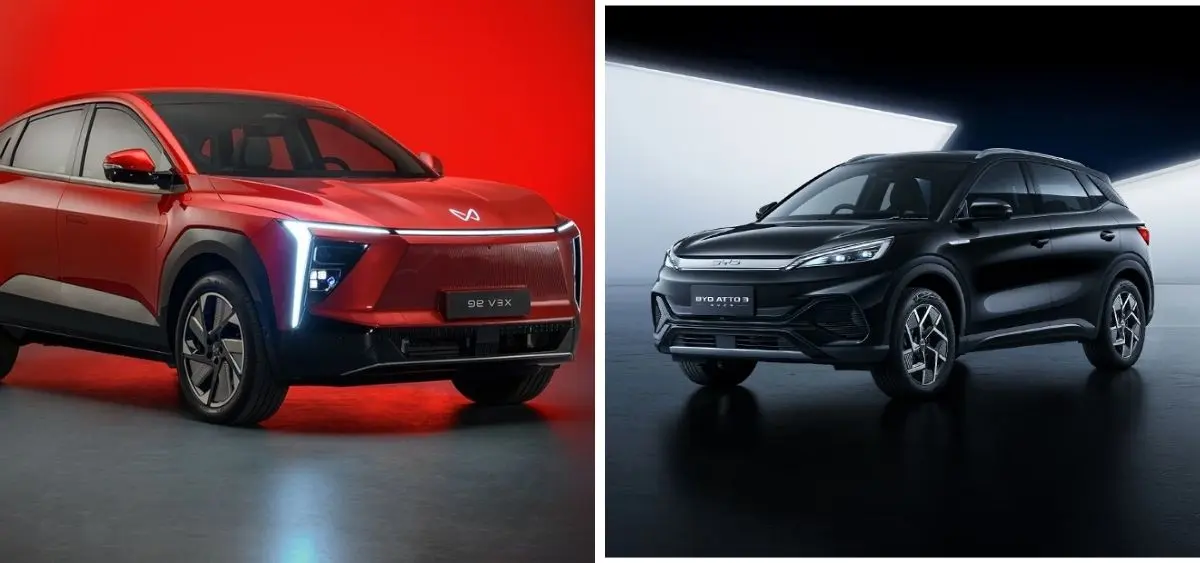Mahindra XEV 9e vs BYD Atto 3: The Indian electric vehicle (EV) market is rapidly evolving, and 2025 promises some exciting options for EV enthusiasts. Two SUVs that are generating a lot of buzz are the Mahindra XEV 9e and the BYD Atto 3. While both are electric SUVs, they cater to slightly different audiences, with distinct strengths and design philosophies. Let’s break down how they compare in terms of design, performance, technology, safety, and value.
Design and Aesthetics
The Mahindra XEV 9e takes a bold approach with its futuristic coupe-SUV silhouette. Its sharp lines, LED lighting, and muscular stance give it a youthful, aggressive appeal. It stands out on Indian roads as a modern and edgy vehicle designed with global EV trends in mind.
In contrast, the BYD Atto 3 follows a more conventional SUV shape with smoother curves, a premium finish, and subtle sporty details. Its urban sophistication appeals to buyers looking for elegance and refinement rather than flamboyance. Essentially, the XEV 9e impresses with its boldness, while the Atto 3 exudes urban sophistication.
Interior and Comfort
Inside, the XEV 9e is spacious and practical, designed for Indian families. It features a triple 12.3-inch display setup, advanced driver monitoring, and a clean, tech-heavy dashboard. Comfort levels are high, making it suitable for long drives and city commuting alike.
The Atto 3, meanwhile, focuses on luxury and style. Its rotating touchscreen infotainment, premium materials, and well-designed dashboard create a futuristic yet elegant cabin. While the XEV 9e emphasizes space and practicality, the Atto 3 shines in style and perceived quality.
Performance and Range
Performance is a key differentiator. The Mahindra XEV 9e offers impressive power outputs ranging from 228 to 282 bhp and ARAI-certified ranges of 542 km (59 kWh) to 656 km (79 kWh). This makes it ideal for longer journeys and provides excellent value for Indian consumers.
The BYD Atto 3 offers decent acceleration (0–100 km/h in 7.3 seconds for the 60 kWh variant) and ARAI-certified ranges between 468 km and 521 km. While slightly lower in range than the XEV 9e, the Atto 3 delivers a refined driving experience with smoother handling and more polished acceleration.
Technology and Safety
Both SUVs are tech-packed. The XEV 9e features advanced connected-car technology, in-car cameras, and driver-assistance systems. Its futuristic interface appeals to tech-savvy buyers.
The Atto 3 comes with a rotating touchscreen, a premium sound system, and a comprehensive advanced driver-assistance system (ADAS). Safety-wise, both vehicles score highly, with a 5-star rating from B-NCAP for the XEV 9e and a 5-star rating from Euro NCAP for the Atto 3.
Charging and Convenience
The XEV 9e supports AC charging in 6 hours (11 kW), while the Atto 3 offers faster DC charging (50 minutes for 0–80% at 80 kW), giving it an edge for urban users who rely on public charging networks.
Price and Value
Price is a major consideration. The XEV 9e starts at approximately ₹21.90 lakh, making it more affordable for families seeking long-range EVs—the Atto 3, priced from ₹24.99 lakh, targets premium buyers who prioritize luxury and convenience.
Conclusion
The choice between the Mahindra XEV 9e and BYD Atto 3 ultimately depends on priorities. Choose the XEV 9e if you value longer range, futuristic tech, lower price, and a distinctive design. Opt for the Atto 3 if you prefer faster charging, a premium cabin, and a globally established EV with urban sophistication.
In 2025, both SUVs exemplify India’s electric mobility growth, giving buyers a compelling mix of innovation, performance, and practicality.
Related Articles:-

